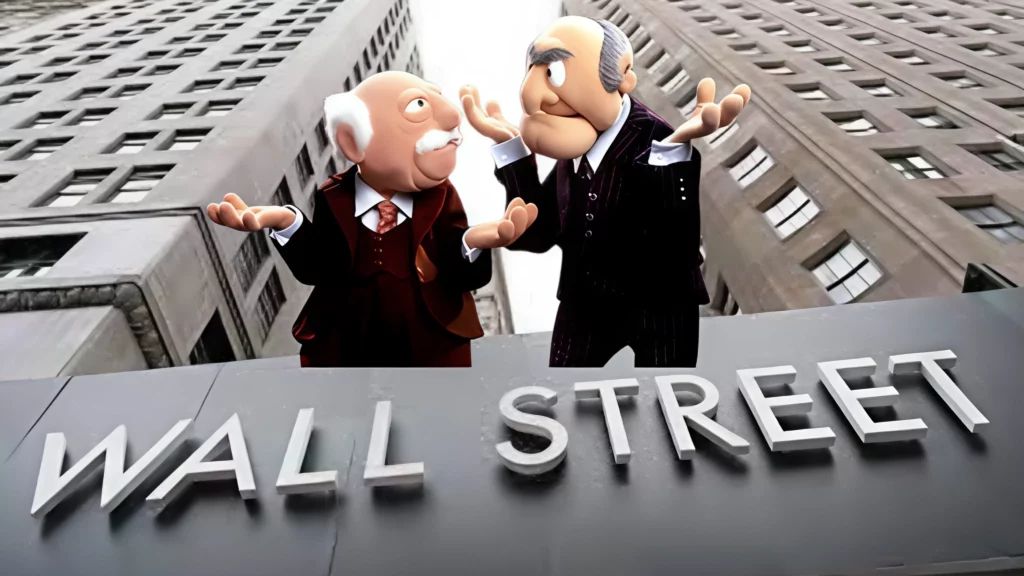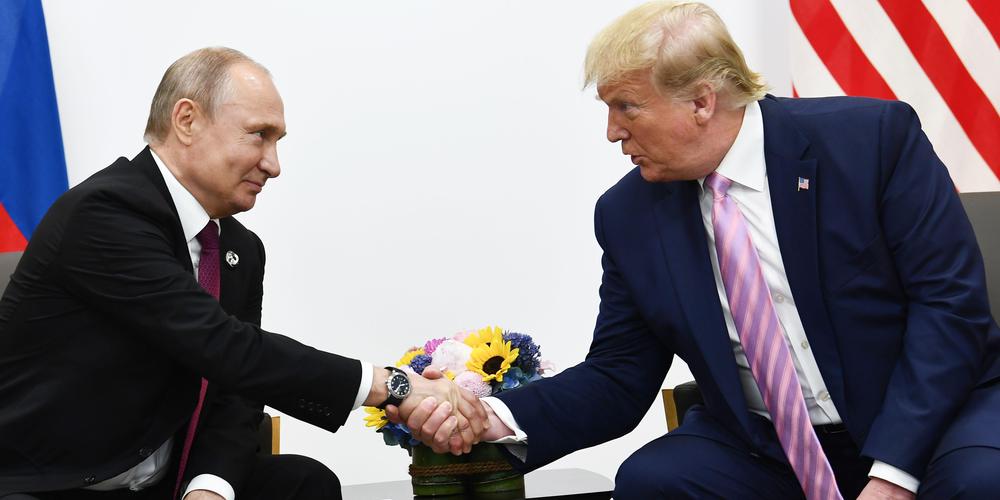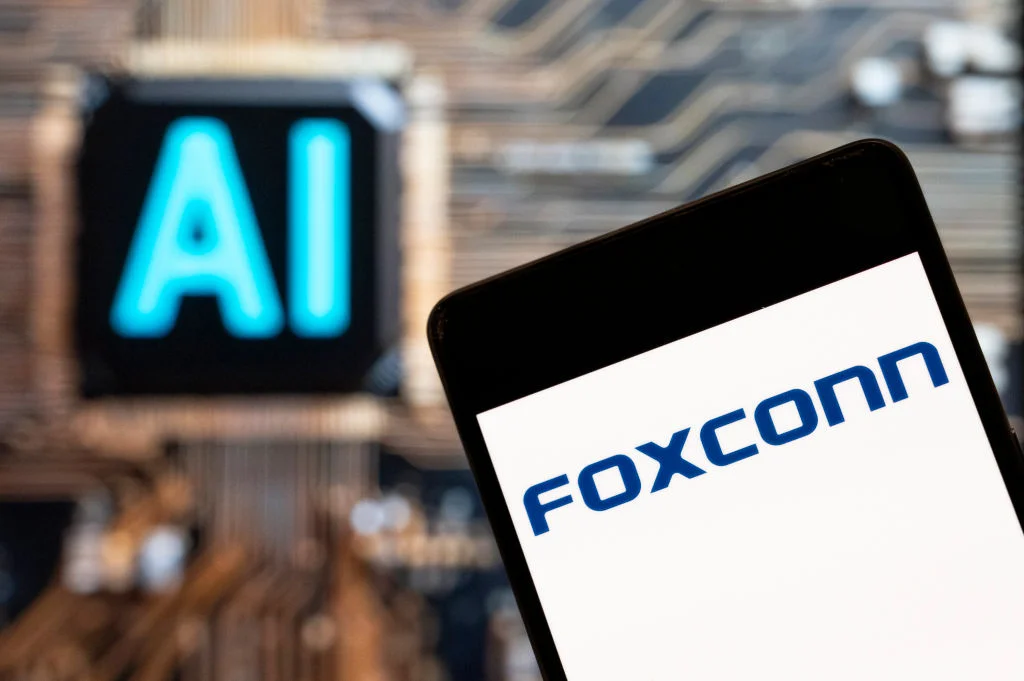Wall Street’s Show

Last Friday, the market was rising because we expected the “Customs Tariffs” to not be so bad. Last Monday, the market was rising because we expected the “Customs Tariffs” to not be so bad. This Tuesday again, the market was rising because we expected the “Customs Tariffs” to not be so bad. And yesterday, we took a monumental hit because Trump made an announcement about “Customs Tariffs” on cars. And at that moment, we realized that, in fact, YES, it could be much worse than we thought. But to be honest, we have no idea—uncertainty is back, and so is the MUPPET SHOW! I’m going to be super blunt with you: right now, I think we’re bordering on “COMPLETE NONSENSE” but in “Champions League” mode. We’re at a very, very high level, and to top it off, all the players are on the same team. Market participants have completely lost the concept of “taking a step back.” Yesterday, I attended a conference where we tried to explain to “young investors” that they should take a step back and “zoom out” from the momentary market fluctuations to avoid making rash decisions. And yet, yesterday, the markets did—once again—exactly what we keep trying to teach new investors not to do. Sure, the uncertainty we’re experiencing in the markets isn’t pleasant, especially since we feel like Trump is experimenting on us just to see how we’ll react! But sometimes, you really have to wonder if we could take just a little bit of perspective and think for more than 12 seconds. You see, it’s like a guy sitting in a huge armchair on top of a mountain overlooking the financial markets. Next to him, JD Vance sits on a stool, and Trump says to him: “You see, JD, let’s tell them we’re going to raise tariffs on Canadian imports just to see how those idiots react!” And then Trump raises tariffs on Canada, and the market plunges into panic mode. Within the next 24 hours, the kind President climbs back up the mountain, sits in his armchair with his obedient Vice President, and announces that, actually, he won’t REALLY enforce these tariffs, and the market rebounds. Ever since, the kind President has been having fun running experiments, testing how these fools in the financial markets will react. Given that it took them six weeks to admit that tariff implementations could impact inflation—of course, driving it UP—Trump figured there were still plenty of psychological tests he could use to toy with the wonderful world of finance. The Noise By now, you would think we might have learned something and started reacting differently. Maybe we would have stopped listening so closely to the ramblings of an American President whose main characteristic is his uncanny ability to change his mind faster and more effectively than the financial markets have for the past 25 years! But no, instead, like a herd of sheep, we eagerly listen to whatever nonsense Trump spouts so we can immediately run in the direction he points—only for him to change his mind three days later, saying, “Actually, the ‘Customs Tariffs’ won’t be so bad after all!” A statement based on ABSOLUTELY NOTHING, obviously. Over the past few days, the three consecutive days of market gains were driven primarily by the hope that Trump might, just maybe, be merciful—that he was our friend and that everything would turn out fine! BUT NO, NOT AT ALL! He is not our friend. Yesterday, he climbed back up his mountain and thought to himself: — “Hmm, let’s hit them with auto import tariffs. I’ll be super aggressive and spew absolute nonsense just to see how these idiots react!” And he wasn’t disappointed. The markets tanked because we realized that if he is capable of taxing imported cars at 25%, then he is capable of absolutely anything between now and the reciprocal tariff announcement on April 2. Since yesterday, the President has once again stoked the flames of uncertainty—uncertainty we had almost started to forget about. And let’s not even get into the content of his speech, because I sincerely believe an eight-year-old child could dismantle his argument. Unreal It’s early this morning, and this column isn’t meant to dive too deep into everything that was said on Wall Street last night. My job is to help you digest the monstrous mess that happened in the finance world—and, if possible, to make you laugh on your way to work. Otherwise, this column would last three hours, and you’d have to take detours just to get through it. That said, I do have to go back to Trump’s speech from last night. To put it simply, the guy announces that every car or car part imported into the U.S. will be taxed at 25%. Boom! Then, after making a gigantic middle finger gesture to foreign automakers, he turns to Americans and explains that this will be “great” because all the car factories that will open in the States to avoid tariffs will create jobs and ensure that everyone works in the automobile industry. Desire and Time OK. First of all, he didn’t ask people if they WANTED to work in the automobile industry. But more importantly, he seems to assume that Renault, Volkswagen, BMW, Mercedes, and all the rest will arrive in Detroit next week to build factories and hire millions of people. He hasn’t considered for ONE SECOND that moving part of their production to the U.S. takes time, and even if the decision was made yesterday, those factories wouldn’t be operational until AFTER Trump’s presidency ends. Not to mention that, knowing the intellectual volatility of the President, the first question an automaker will ask is: “How long is he actually going to stick to these tariffs, anyway?” Because Trump isn’t known for setting things in stone. He’s more about writing in sand with watercolors—one gust of wind or a bit of rain, and it’s back to square one. Yesterday, we realized that we had spent
Everything goes Fast

Well, I don’t know about you, but when I started in this business, there were several categories of “clients”—or, in other words, investors. There were the short-term ones, who only thought about making money quickly and spending it even faster. Then there were the medium-term investors, who bought assets for a few months, just to ride the trend. And finally, the long-term ones—the Warren Buffett aficionados or the guys managing the AVS fund. Well, that era seems to be over because, for some time now, it feels like we’ve been living with our noses to the grindstone more than ever, and suddenly, everyone is a trader. Everything moves too fast I don’t know if it’s because technology is advancing so quickly that nobody wants to hold onto positions for too long anymore, since there’s always some breaking news that’s going to change everything tomorrow. No one wants to take risks by looking beyond the immediate. Today, we can’t even see past the next economic figure, and as soon as we get it, we immediately move on to the next. That pretty much sums up yesterday’s market session. We started with a figure that surprised everyone in Germany: the IFO index. For those who may have forgotten, the IFO is a meaningless survey that spits out a number supposedly measuring German business confidence. And this month—oh, surprise—the figure was excellent. You might hear some sarcasm in my voice, and you wouldn’t be wrong. I say this because when reading the press this morning, journalists seemed shocked by how “good” this figure was. But there was really no reason to be surprised since, just three days ago, Germany approved a stimulus package of over €500 billion. If you’re an entrepreneur, you’d have to be pretty demanding not to feel a boost in morale after getting what is essentially a blank check—especially if you’re in the arms industry. Confidence takes a hit The IFO index came in at 86.7, up from 85.3 last month, helping European markets close in the green. That, plus the ongoing self-convincing that Trump’s tariffs—set to be announced on April 2—might be more “targeted” than expected, and that everything might turn out fine after all. So, with a number suggesting that Germans are optimistic (now that they’re all thrilled about being allowed to rearm) and with the euphoric optimism over Trump’s tariffs, the DAX and CAC managed to close in the green. Well, mostly the DAX, because when you close with a 0.00% variation from the previous session, like the CAC did, you can’t exactly claim you finished up. And then we got the U.S. consumer confidence figure. I won’t lie—it was pretty terrible, nothing worth losing sleep over, even though the indices still closed higher. American consumers are starting to lose their smiles and find everything a lot less amusing. And no, it’s not just because McDonald’s raised the price of the Big Mac. No. Consumer confidence just tanked by 7.2 points, landing at 92.9—lower than the Swiss football team’s morale after a World Cup exit. We haven’t seen numbers this bad since January 2021. And expectations for the next six months? In free fall at 65.2. A 12-year low. Who do we have to thank for this? Uncertainty, inflation, and… of course, Donald Trump. Let’s also not forget that this is the fourth straight month of decline, with no signs of recovery on the horizon. Sure, it’s just a survey, not hard economic data, and we all know the value of surveys—especially considering that just yesterday, we learned that the French are supposedly growing more confident in Macron, which just goes to show that surveys are more science fiction than anything else. Morale is in the gutter Anyway, if we believe what we’re hearing, while Trump keeps throwing around 200% tariffs like others drop punchlines on X, American households are starting to really panic. Inflation is digging in, recession is lurking, and there’s a growing sense that this is all heading toward stagflation—that delightful 1970s cocktail of stagnating growth and soaring prices. Just the thing to pop a bottle of Dom Pérignon—if you can afford it after those 200% tariffs at U.S. customs. On the political front, it’s still the usual dance—more like a mess of chaotic footwork. One day, Mexico gets hit with tariffs; the next day, they’re scrapped. Then comes a threat against Europe over wine and vodka, just to make sure nobody understands anything anymore. The result? Companies are tearing their hair out, investors are biting their nails, and consumers are staring at their wallets, wondering if they’ll have enough left for Black Friday shopping. Meanwhile, Trump’s economic advisor, Stephen Miran, remains calm. He says—and I quote—”It’s more political than anything, no need to panic.” Okay, Stephen, but meanwhile, the Fed is starting to think it might need to step in. The job market is still holding up (thanks to that 4.1% unemployment rate), but for how long? Until next Friday??? Bottom line: Americans are doubting, prices are rising, and the economic compass is glitching. And this is all before the real effects of Trump’s policies even kick in. Hold onto your shopping carts—it’s going to get hot in more places than just the beaches this summer. The numbers don’t look good So, as you might have guessed, confidence is in bad shape. But as with every crisis, there’s always something positive to take away. Yesterday, some traders still managed to muster up the energy to buy at the close, hoping that if consumer confidence is bad, the Fed might loosen up and decide to help us out. Which makes sense. But before Powell considers lending a hand, inflation will first have to show it is cooling off too. See how easy it is to find our new market obsession for the rest of the week? Because right now, I can tell you that everyone will be rushing to the nearest church to light a candle, hoping that Friday’s PCE numbers come in
Secret Agreement

There are two ways to look at things when focusing on yesterday’s session. Either we delve into the details of everything we know and everything we speculate about the future of tariffs set to take effect on April 2—this column would then be about 14 pages long and we’d still be discussing it at 11 a.m.—or we simply summarize it using the words of a French comedian who left us too soon: “It is authorized to believe, in authorized circles, that a secret agreement MIGHT be reached on tariffs”—which would bring joy and relief while clearly acknowledging that we know NOTHING! The Unrestrained Use of the Conditional Yesterday’s trading day was split into two very distinct camps. Europe decided to do nothing—or at least, not much—while the U.S. markets took the path of gains, assuming that it MIGHT POSSIBLY MAYBE, but not for sure, be the case that the upcoming tariff decisions from Donald Trump’s administration won’t be as severe as expected. And that even if—at worst—they are as severe as predicted, the affected sectors could be carefully selected, with some parts of the economy EVEN receiving preferential tariffs. This was particularly true for the semiconductor sector, which rebounded yesterday based on speculation, rumors, and theories suggesting that things might not be as harsh for them. But let’s be clear. If you go back through all the “justifications” for the U.S. rally and all the rational explanations for yesterday’s gains, the main takeaway is that the entire market surge on Monday, March 24, was based solely on speculation and the hope that the tariffs might be SLIGHTLY LESS brutal than expected. BUT NO ONE has seen an official press release. No media outlet has quoted an anonymous source “close to the matter.” No politician has made a cryptic remark hinting that they know something we don’t. No. Yesterday’s U.S. rally—the 1.42% rise in the Dow Jones, the 1.76% gain in the S&P 500, the 2.27% surge in the Nasdaq, and the 3% increase in the Semiconductor Index—was entirely driven by the idea that, in the wonderful world of finance, tariffs set to be announced next week might not be as “monstrous” as feared, and that Trump could show some “flexibility” toward certain trade partners. But we know absolutely nothing, and everything—and I do mean ABSOLUTELY EVERYTHING—remains possible. Yesterday, the stars aligned, and we had a great day on Wall Street. However, it would take just the flap of a butterfly’s wings to send the market in the opposite direction in the coming days. Volumes were also dismal yesterday—hardly lending credibility to the strength of the rebound. The only certainty we have right now is that uncertainty remains high. Perhaps it’s best to simply take yesterday’s session as a temporary good news event and enjoy the moment, all while knowing that everything could evaporate in the blink of an eye—especially given the unpredictability of the Trump administration. The U.S. session was all about champagne, confetti, and caviar by the spoonful, while European markets preferred to sit on their hands and wait for clearer skies. For weeks now, it has felt like we are living in two completely different worlds. Never before have European and U.S. markets been so disconnected. Today, Europe is preparing for war on the continent, pouring money into military investments, unlocking credits left and right to fund the war effort, and completely ignoring structural issues like social welfare, economic slowdown, uncontrolled immigration, and questionable policies in certain EU countries. The war narrative has overshadowed everything else. Now, more time is spent discussing “patriotic bonds” to finance military spending than assessing the real state of the European economy. Yesterday, European indices did nothing—except in the defense sector—as traders focused on European PMI data, which suggested that the economy “seems to be recovering” but isn’t quite back to the party mood yet. In summary, the manufacturing sector is doing better than the services sector across Europe. Still, overall, things were better than last month and roughly in line with expectations. Sure, these numbers don’t make you want to roll around in caviar, but at the same time, they’re not catastrophic either. If Trump doesn’t hit us too hard with tariffs, things should turn out okay. As you can see, we’re still stuck in the same cycle: Tariff uncertainty fuels stress, and we just want to get past it to focus on fundamentals. Those fundamentals will soon return, as next week brings employment data, and by mid-April, earnings season will hit us once again. So, to sum up: Europe did nothing yesterday. The U.S. market soared on almost nothing. Uncertainty remains high. Meanwhile, yesterday also marked the 25th anniversary of the dot-com bubble burst, leading the media to speculate whether we’re living through a similar scenario without realizing it. The answer is: NO! But scaring ourselves is so much fun that it would be a shame to pass up the opportunity. On the Other Side of the World In Asia, markets were mostly up this morning because the argument that “TARIFFS MIGHT BE LESS SEVERE THAN EXPECTED” is still driving enthusiasm. Japan is up 0.73%, China is up 0.12%, but Hong Kong is moving on, as traders there start questioning whether the recent rally driven by government stimulus in AI is losing steam. As a result, the Hang Seng is down 1.85%. Oil, Cryptos, and the Latest from Trump On the oil front, we actually had something official, as Donald Trump (yes, him again) announced a 25% tariff on imports from any country that dares to buy Venezuelan oil. Clearly, the White House is set on undermining the Venezuelan government by hitting where it hurts: the wallet. The news pushed crude oil up to $69 and some change. Again, with tariffs and uncertainty, it’s hard to know where things are headed. But for now, oil is reintegrating its medium-term bullish trend, and the risk of a major correction is (slightly) fading—but only slightly, because conditionality is in vogue.
Tariffs, Yeah Yeah…

I just went through the latest news from last night and Sunday evening, and it seems that Trump has refrained from making any sharp statements for over 48 hours. At least, no statements that could impact the markets or drag us underwater as we start the week—something we’ve gotten used to since the American President took office. So, we should begin the week on the same footing as the end of last week, hoping that the worst is behind us and, most importantly, that after the storm comes the calm! Nothing Changes Technically, the markets are still highly oversold, and we remain in critical zones. For now, it looks like we’ve limited the damage, and in the grand scheme of things, we’re not that far from all-time highs. It wouldn’t take much for the market outlook to shift from storm warnings to clear blue skies. However, the same issues that got us here are still present and remain a serious thorn in our side. TARIFFS are our main concern—and will likely remain so for quite some time. In early April, Trump is expected to implement reciprocal tariffs with several countries, but there’s still a lot of uncertainty. So far, trade issues haven’t been resolved, whether with Europe, Canada, China, or Mexico. In short, we keep talking about it, but given the lack of clarity—not just regarding their implementation but also the possibility of them being lifted, reduced, increased, or modified—we’re left in the dark. This is what we call UNCERTAINTY, and apart from discussing it every morning, there’s not much hope for clarity anytime soon. The good news is that, “for now,” we seem to have “digested” the situation. As long as the White House doesn’t announce exceptional tariffs on French camembert exports, things might not get worse. Looking at analysts and strategists, expectations for the year have already been lowered, but at the same time, we’re not plunging into an economic abyss. Last week, we did hear some positive news regarding artificial intelligence—take Micron’s quarterly numbers, confirming the sector’s boom. That said, this optimism hasn’t been reflected in the behavior of the Magnificent Seven, particularly Nvidia, as investors remain cautious about the tech sector. We know that at these levels, it’s a great opportunity to reinvest, but for now, risk appetite remains moderate. Confidence—or Lack Thereof While the bleeding has stopped, the rebound has been about as dynamic as an overcooked spaghetti noodle left in boiling water for a week. We need a clear confirmation of this rebound, not this sluggish movement we’ve been witnessing over the past three or four days. The first real test for any meaningful recovery may come from the U.S. consumer confidence data set to be released Tuesday evening. After all, American growth is nothing but a myth if the average American isn’t spending their evenings shopping on Amazon—mostly buying useless things. Lately, however, enthusiasm seems to be fading, with consumers opting to browse Vinted rather than the Apple Store to splurge on two new MacBooks and three iPhones. We saw and heard it last week: FedEx isn’t optimistic about the future, and Nike hinted that “this year won’t be easy.” These statements suggest that consumer spending is slowing down, and when that happens, American growth suffers—and the worst-case scenario looms. However, tomorrow’s consumer confidence data will either reassure us or sink us further. If the number disappoints, panic will set in, reminding us of recent reports suggesting that a potential recession could be on the horizon by summer. And I don’t need to explain what happens when people start seriously considering the arrival of a recession—scythe, black hood, and all. Ironically, the only silver lining in this scenario would be if consumer spending slows down enough to help inflation retreat toward 2%—which, in that case, would be a blessing in disguise. It’s for the end of the week And inflation? We’ll talk about it at the end of the week since we’re in “PCE week,” and that’s when we’ll see if everything is falling into place in the right direction and whether we should conclude that this economic slowdown—driven by consumers and falling inflation—is the price to pay to allow Powell to cut rates AND restart the economy while Trump pockets cash with his tariffs. It’s still a bit early to make judgments or place bets on what’s next, but the numbers that will be our daily bread this week might give us a bit more clarity and add some extra pieces to the global financial puzzle. I wouldn’t go so far as to say that the coming week is a “turning point,” but let’s just say that a few seemingly trivial figures could help us navigate our way out of this labyrinth of tariffs, interest rate wars, and the ongoing fight against inflation. The upcoming week will also be interesting from a geopolitical perspective, since last week’s discussions were limited, and the ceasefire between Russia and Ukraine is becoming more and more overdue. As for Gaza, we’ve apparently already forgotten how to spell the word “ceasefire.” In short, investors are filled with doubt, waiting for concrete proof before confirming a rebound—or completely deflating. Yes, because we must be very careful: in case of disappointment and a potential drop back to the March 15 lows, with a possible break below the 5,500 level on the S&P 500, we could find ourselves in what might well be called a “financial bloodbath.” But let’s not sell the bear’s skin before we’ve killed it. For now, futures indicate a grand opening on Wall Street, but if Trump set his alarm early on this penultimate Monday of March, let’s not forget that he has the ability to flip optimism on its head 22 times in a single day. Asia and the Rest This morning in Asia, absolutely nothing is happening. The three main regional indices are in total stagnation. If they were playing “Red Light, Green Light,” they’d be unbeatable. The Nikkei is unchanged, despite
Where To Hide?

Geopolitically, in the Gaza Strip, Israel continues its ground operations, while Hamas has decided to retaliate. In Turkey, new protests were planned Thursday after the arrest of Istanbul’s mayor, Ekrem Imamoglu. As for the Russia-Ukraine conflict, despite the principle of a ceasefire accepted by both sides, Kyiv bombed a strategic air base in Russia on Thursday, while Moscow continues its drone attacks. Under these conditions, perhaps it is best to stay in cash? The Swiss National Bank (SNB) continues its monetary easing policy and thus lowered its key interest rate by 25 basis points, bringing it to 0.25% on Thursday. The decision is motivated by weak inflationary pressure and “increased risks of downward revision of inflation,” according to SNB statements. This marks the fifth consecutive cut since Q1 2024. The SNB began gradually lowering its key rate in March last year, from 1.75% to 1.50%. At the last monetary policy decision in December, the central bank surprised markets with a 50-basis-point cut. The Swiss exception in the markets In Switzerland, the SMI closed up 0.43%, thanks to stocks like Nestlé and Novartis (+1.6% each). Roche (+0.03%) joined the British lab Oxford BioTherapeutics’ therapeutic antibody discovery platform with an initial payment of $36 million (around 32 million francs). In Paris, the CAC 40 ended with a -0.95% loss at 8,094.2 points. The British FTSE fell -0.09%, and Germany’s DAX declined -1.18%. The EuroStoxx 50 lost -1.0%, and the FTSEurofirst 300 -0.41%. The Stoxx 600, affected by profit-taking in the banking sector (-1.72%) and industry (-1.03%), ended down -0.43%. The German Bund yield fell 1.8 basis points, to 2.780%. The French 10-year OAT remained stable at 3.472%, as Bercy seeks to raise €5 billion in equity for defense companies. The spread between the Bund and OAT remained unchanged at approximately 70 basis points. The Bank of England unsurprisingly kept its key rate at 4.50% on Thursday. The Monetary Policy Committee voted 8 to 1, with one member preferring a -25 basis point cut. “A gradual and cautious approach is needed regarding further monetary policy easing,” the institution stated. In the United States, the Dow Jones closed near equilibrium (-0.03%), while the Nasdaq fell -0.33% and the S&P 500 -0.22%. Tesla rose slightly (+0.17%) after recalling over 46,000 Cybertruck pickups, as body panels may fall off due to adhesive failure, the U.S. National Highway Traffic Safety Administration (NHTSA) announced Thursday. In the bond market, the 10-year U.S. Treasury yield remained stable at 4.24% compared to the previous day. The price of Bitcoin reached a high of $87,453 in early New York trading but quickly fell to $83,655 after U.S. President Donald Trump made a video appearance at the New York Digital Assets Summit. Before the video statement, rumors circulated on X suggesting Trump would announce zero capital gains tax for certain cryptocurrencies or make a favorable statement about the U.S. strategic Bitcoin reserve. Ultimately, his most positive statement was his reaffirmed goal to make the United States a leader in all areas of cryptography. This morning in Asia Chinese stocks fell slightly in early trading. Hong Kong’s Hang Seng index dropped -0.68% after a -1% decline on Thursday, as investors became cautious following a tech stock rally and the index hit its highest level in three years on Tuesday. Japan’s Nikkei, however, was up +0.38%, driven by banking stocks. The U.S. Dollar Index, which measures the dollar against a basket of six currencies, remained stable at 103.84, after rising +0.36% on Thursday. The yen traded at 149.11 per dollar, near last week’s five-month high of 146.545. The yen is up +5% this year on expectations that the Bank of Japan will raise rates again in 2025. Spot gold fell -0.3% to $3,034.09 per ounce. Silver dropped -0.8%, platinum lost -0.2%, and palladium fell -0.5%. Copper prices in London edged up today, nearing the psychological $10,000 mark after a report suggested China plans to increase its strategic reserves of key industrial metals, including cobalt, copper, nickel, and lithium, this year. Aluminum rose +0.3%, lead increased +0.1%, zinc gained +0.5%, and tin fell -0.1%, while nickel prices dropped -2.0%. Chicago wheat fell for the fourth consecutive session, nearing a one-week low, as the market struggles with weakening demand for U.S. cargoes and a stronger dollar. Soybeans gained ground, while corn prices declined. Brent crude oil futures rose +0.5%, while West Texas Intermediate crude futures increased +0.6%. Both are set to post +2% weekly gains. Have a nice day! Thomas Veillet Financial Columnist
When in Doubt, Don’t Move

The U.S. Federal Reserve (Fed), which unsurprisingly left its rates unchanged on Wednesday, mentioned an increase in “uncertainty” and downgraded its forecasts for the world’s largest economy two months after Donald Trump returned to the White House. At the end of a two-day meeting, the Fed’s communication shows that its officials are less confident in the health of the U.S. economy. According to their first forecast update since December, they now anticipate much weaker GDP growth, at +1.7% by the end of the year (compared to the previously expected 2.1%). They also predict an acceleration in inflation to 2.7% (up from 2.5% in December). Profit-Taking in Europe In Paris, the CAC 40 closed with a 0.70% gain at 8,171.47 points. The British FTSE edged up 0.02%. Germany’s DAX, weighed down by profit-taking in defense stocks, fell by 0.34%. The index had hit a record high the day before, at 23,476.01 points. The EuroStoxx 50 index gained 0.46%, the FTSEurofirst 300 added 0.28%, and the Stoxx 600 rose by 0.26%, mainly driven by the energy sector (+1.53%) amid geopolitical risks. Defense companies Renk Group, Rheinmetall, and Hensoldt dropped by 4.53% and 9.31% due to profit-taking after the Bundestag approved a reform of the debt brake, which is expected to support the country’s military spending. Inflation in the Eurozone stood at 2.3% year-on-year in February, slightly below the initial estimate, according to final data published by Eurostat. The yield on 10-year German government bonds ended down about two basis points (bps), at 2.798%, after hitting a two-week low of 2.748% during the session. It had climbed to 2.938% last week, its highest level since October 2023. Investors are focusing on the Fed and U.S. tariffs. In Switzerland, the SMI ended down 0.16%. Heavyweights Roche (-1.0%), Nestlé (-0.8%), and Novartis (-0.2%) weighed on the index, as did UBS (-1.6%), which finished as the worst performer. Rebound in the U.S. The Dow Jones gained 0.92%, the Nasdaq rose by 1.41%, and the broad S&P 500 index advanced 1.08%. Aircraft manufacturer Boeing surged (+6.84%) following comments from its CFO. Brian West assured that the company had little exposure to President Trump’s tariffs, noting that most of its supplies come from the U.S. Tesla saw strong demand (+4.68%) after Bloomberg reported that the company had taken a key step in developing its robotaxis in California, receiving an initial permit to transport passengers. The 10-year U.S. Treasury yield eased to 4.24% from 4.28% the previous day. This Morning in Asia In Japan, markets were closed due to a public holiday, but Nikkei futures rose by 0.2%. In China, the CSI300 index fell by 0.66%, while the Shanghai Composite Index dropped by 0.46%. Hong Kong’s Hang Seng index tumbled 1.5%. The U.S. dollar weakened this morning, losing 0.27% against the yen, at 148.25, while the euro stabilized at $1.0908, its highest level in five months. The British pound reached a four-month high of $1.3015 early in the session ahead of the Bank of England’s decision later today, where it is expected to keep interest rates unchanged. Spot gold remained largely unchanged at $3,048.37 per ounce after hitting a record high of $3,055.96 earlier in the session. Copper prices on the London Metals Exchange reached their highest level in more than five months on Thursday, with markets watching for potential U.S. tariffs on the metal. Nickel was the worst-performing base metal, falling 1.9%, as concerns over supply eased following news that Indonesia’s main nickel processing complex was unaffected by recent floods. Chicago wheat futures rose, recovering losses from the previous session, as the dollar weakened and slower grain shipments from Russia, a key supplier, raised supply concerns. Soybeans rose for the first time in three sessions, while corn advanced for the second consecutive day. Oil prices rose in early Thursday trading amid falling fuel inventories in the U.S. and rising tensions in the Middle East. Brent crude gained 40 cents (0.57%) to $71.18 per barrel, while West Texas Intermediate (WTI) rose 34 cents (0.51%) to $67.50 per barrel. What Would a Day Be Without Trump? Today, President Donald Trump is expected to sign an executive order that will facilitate the dismantling of the U.S. Department of Education, taking a step toward fulfilling a campaign promise. According to reports, the order also ensures that throughout the process, there will be no disruption in the delivery of services, programs, and benefits that Americans rely on. Mr. Trump will instruct his recently confirmed Secretary of Education, Linda McMahon, to take all necessary steps to prepare for the department’s closure and the transfer of its responsibilities to the states. The executive order also states that any program or activity receiving remaining funds from the Department of Education must not promote diversity, equity, and inclusion (DEI) or gender ideology. Have a nice day! Thomas Veillet Financial Columnist
Another Slice Maybe?

According to the Russian news agency TASS, citing the Kremlin, “President Putin supported Trump’s idea of a mutual 30-day renunciation of strikes on energy infrastructure by Russia and Ukraine and has given the order to the military.” In Germany, the Bundestag approved on Tuesday a historic reform of the debt brake and the creation of a €500 billion infrastructure fund. Before dividing Ukraine between them, our friends Trump and Putin exchanged their views. The 30-day truce looks more like a bluffing game than a firm and manly handshake. Why? Because Vladimir Putin has once again set conditions for the truce, including an end to the “rearmament” of Kyiv, according to the Russian presidency. “The Russian side has emphasized several key points regarding the effective control of a potential ceasefire along the entire contact line, the need to end forced mobilization in Ukraine, and the rearmament of the Ukrainian armed forces,” reports the Kremlin in a statement. Meanwhile In Germany, the Bundestag approved on Tuesday a historic reform of the debt brake and the creation of a €500 billion infrastructure fund, thus putting an end to decades of fiscal conservatism in Germany, which could revive economic growth and support the country’s military spending. Meanwhile, in Switzerland, the Confederation’s Expert Group for Economic Forecasts has slightly revised downward its growth projections for the Swiss economy. The GDP, adjusted for sporting events, is expected to grow by 1.4% in 2025 and 1.6% in 2026 (compared to 1.5% and 1.7%, respectively, in the December forecasts). Thus, growth is expected to remain below average for another two years. These forecasts are based on the assumption that there will be no escalation into a global trade war. Due to the prevailing high uncertainty, SECO is supplementing the expert group’s forecasts with two alternative scenarios. Uncertainty surrounding international economic and trade policies and their macroeconomic impacts remains particularly high. The current forecasts assume there will be no escalation into a global trade war. However, much more extreme developments remain possible. A negative scenario of international economic slowdown would have significant consequences on Swiss foreign trade and the economy. But in the “maybe yes, maybe no” series, if global demand and the European economy were to evolve more favorably than expected, notably due to a large-scale fiscal stimulus, such as the one currently being pursued by Germany, a positive scenario would boost demand for Swiss exports, driving up domestic economic growth. What do the markets think? In Paris, the CAC 40 rose by 0.5% to 8,114.57 points, while the German DAX climbed 1.03% and the British FTSE strengthened by 0.29%. The EuroStoxx 50 index ended the session with a 0.76% increase, while the FTSEurofirst 300 gained 0.56% and the Stoxx 600 added 0.59%. In Switzerland, the SMI closed with a minimal gain of 0.03%. Novartis (-0.2%) was a drag, while Nestlé (+0.3%) supported the index. On the bond side, the French ten-year bond yield reached 3.48% on Tuesday, the same level as the previous day at close. Its German equivalent, the European benchmark, also remained stable at 2.81%. In the United States, investors are awaiting the Fed’s decision but even more so the comments that will follow. The markets continue their erratic movements, though they are mostly bearish. The “Magnificent 7” are becoming less and less so. Nvidia fell 3.43%, dragging down part of the semiconductor sector, including Broadcom (-3.00%), AMD (-1.00%), and Micron (-1.35%). Alphabet, Google’s parent company, lost 2.34% after announcing a “definitive agreement” to acquire the American cybersecurity startup Wiz for $32 billion. Tesla’s stock plunged 5.34% after RBC lowered its price target for the electric vehicle maker from $320 to $120, citing lower expectations for the pricing of its fully autonomous vehicles and its market share in the robotaxi segment. The stock is now down nearly 44% for the year. In the bond market, U.S. ten-year Treasury yields eased to 4.28%, compared to 4.31% the previous day at close. Notable were new comments from the Trump administration on tariffs, adding further confusion to the current situation. U.S. Treasury Secretary Bessent stated that reciprocal tariffs with China will not automatically be 25% plus 25%, and that President Trump has asked him to rethink the U.S. sanctions regime. He also mentioned that each country will receive a specific tariff figure on April 2, which could be low for some, while 15% of countries will account for the bulk of tariffs, according to Fox Business News. Understand that if you can… In the commodities sector, metals were all trending lower. The three-month benchmark copper on the LME fell from a five-month high, down 0.1%, while aluminum dropped 0.2%, lead slipped 0.1%, and zinc lost 0.4%. Only nickel was up, gaining 0.5%. Chicago wheat declined, as Russia—the leading grain exporter—agreed to temporarily stop attacking the energy facilities of its rival supplier, Ukraine, even though it refused to approve a full ceasefire. Corn fell for the second session under pressure from expectations of increased planting in the United States this year, while soybeans rose. Cryptos are suffering. Bitcoin fell 1.82% to $82,472, while Ethereum (-1.42%) and XRP (-3.51%) also declined. However, U.S. Bitcoin ETFs recorded net inflows of $274.6 million, the highest since February 4. This morning in Asia Asian stocks were muted on Wednesday, and gold hovered near its highest levels as economic concerns and a shifting geopolitical landscape kept risk appetite in check, while the yen stabilized after the Bank of Japan () kept rates unchanged as expected. The Japanese Nikkei rose 0.69%, staying close to the levels it traded at before the decision. Spot gold held at $3,029.70 per ounce after reaching a record high of $3,038.26 on Tuesday. In contrast, spot silver fell 0.3%, platinum lost 0.5%, and palladium declined 0.7%. Brent crude futures fell 0.24% to $70.39 per barrel, while West Texas Intermediate crude slipped 0.2% to $66.75 in early trading. Have a nice day! Thomas Veilet Financial Columnist
What Do They Want?

While awaiting information on the discussion between Trump and Putin regarding the division of Ukraine, markets are holding back ahead of meetings of various central banks: the U.S. Federal Reserve and the Bank of Japan on Wednesday, followed by the Bank of England and the Swiss National Bank (SNB) on Thursday. Meanwhile, the Empire strikes back. The Canadian Prime Minister is in Paris before meeting with leaders from other European capitals. A bit of economics…The global economy remained resilient in 2024, with a robust 3.2% annualized growth rate in the second half of the year. However, recent activity indicators suggest a moderation in global economic growth prospects. Business and consumer confidence have deteriorated in some countries. Inflationary pressures persist in many economies. At the same time, uncertainties regarding public policy remain high, and significant risks persist. The continued fragmentation of the global economy is a major source of concern. Higher-than-expected inflation would lead to a more restrictive monetary policy and could result in disruptive price corrections in financial markets. Conversely, agreements to lower tariffs from their current levels could boost growth. The OECD now expects global growth to reach 3.1% in 2025, down from 3.3% in its previous December projections. The United States, where President Donald Trump has sparked a trade war with key partners, is projected to see its GDP grow by 2.2% this year, before slowing to 1.6% next year, according to the OECD, which has thus lowered its growth forecasts for the country by 0.2 and 0.5 percentage points, respectively. OECD experts expect inflation to accelerate to 2.8% in the United States this year (+0.7 percentage points compared to their previous forecast), after 2.5% in 2024. A Bit of Trump… As Usual Why is Canada in the crosshairs of the American president? Oil, base metals? Well, according to Tricia Stadnyk (The Conversation, March 13, 2025), Trump wants to put some water in his Californian wine. Explanation. The United States’ interest in Canada’s water is concerning, even though it is not new. Recently, the U.S. halted negotiations on the Columbia River Treaty, a key agreement on water sharing between the two countries. Geopolitical tensions, combined with demand outpacing supply in a context of climate change, pose an imminent and very real threat to Canada. A long-abandoned water project, known as the North American Water and Power Alliance (NAWAPA), was initially proposed by the U.S. Army Corps of Engineers in the 1950s. It is considered a “zombie project” that keeps resurfacing but never truly dies. It is no coincidence that water is referred to as “blue gold.” And What About the Markets? European stock markets ended higher as the U.S. economy confirmed its slowdown, just two days before the Fed meeting. The CAC 40 index gained 0.57% to 8,073.98 points, while the EuroStoxx50 rose 0.69% to 5,441.46 points. In Switzerland, ahead of the Swiss National Bank (SNB) decision next Thursday, the SMI closed up 1.09%. Novartis rebounded and gained 2.3%. The other pharmaceutical heavyweight, Roche (+1.7%), also supported the index, as did Nestlé (+1.2%), though to a lesser extent. German bond yields fell after reaching their highest levels since October 2023, following the debt brake reform agreement in Germany. The downward revision of Germany’s growth forecasts by the Ifo Institute also contributed to lower yields. The 10-year German Bund yield fell by 7.1 basis points to 2.8030%, while the 2-year yield ended the session slightly lower at 2.1810%. In France, the 10-year OAT yield dropped 9 basis points to 3.4780%. In the United States, the picture was more mixed. The Dow Jones advanced 0.85%, the Nasdaq gained 0.31%, and the broader S&P 500 rose 0.64%. Chevron, the American oil giant, gained 1.08% after announcing the purchase of about 5% of Hess Corporation’s shares. Intel surged 6.82% after documents revealed that its new CEO, Lip-Bu Tan, had purchased $25 million worth of company shares. The 10-year U.S. Treasury yield increased by 0.6 basis points to 4.314%, compared to 4.308% last Friday. The 30-year U.S. bond yield fell by 1 basis point to 4.6045%, from 4.615% on Friday evening. The 2-year U.S. bond yield increased by 4.4 basis points to 4.059%, compared to 4.015% on Friday night. Foreign Exchange Market The euro, which has strengthened in recent sessions due to hopes of a German budget agreement, was up 0.4% at $1.092. It was near its $1.0947 peak from last week, the highest level since October 11. The dollar rose 0.4% against the yen, reaching 149.160 yen, close to last week’s low of 146.52 yen. Meanwhile, the Chinese yuan approached its four-month high in offshore trading, trading at 7.233 per dollar. In cryptocurrencies, Bitcoin was up 1.6% for the day at $84,552. Commodities Spot gold was up 0.2% at $3,008.08. Spot silver gained 0.2%. Platinum added 0.5%, and palladium increased 0.5%. On the London Metals Exchange (LME): Copper remained at its five-month high of $9,864 per ton, driven by China’s stimulus plan and a weaker U.S. dollar. Aluminum remained stable. Lead dipped 0.1%. Zinc lost 0.2%. Tin declined 0.5%. Nickel fell 0.8%. Oil Prices Oil prices rose on Monday after the United States reaffirmed its commitment to relentlessly attack the Houthis in Yemen. Additionally, China’s economic data released earlier in the day fueled hopes of higher demand. Brent crude increased 0.43% to $70.88 per barrel. West Texas Intermediate (WTI) crude gained 0.31% to $67.39 per barrel. Agricultural Commodities Wheat futures in Chicago surged on Monday, as windstorms in U.S. grain regions raised fears of crop damage. Analysts also noted that traders expect a decline in Russian exports, which could increase demand for U.S. wheat. Soybean prices fell due to lower-than-expected production figures. Corn prices edged slightly higher. This Morning in Asia The Hang Seng was up 2% in morning trading, and its 23% gain since the beginning of the year is the largest among major financial markets. Mainland Chinese stocks recorded more modest gains, while the MSCI Asia-Pacific index rose 1%, with markets in Seoul, Sydney, and Taipei also posting gains.
No Worries

The Christian Democratic Union (CDU) of future Chancellor Friedrich Merz, the Social Democratic Party (SPD), and the German Greens reached an agreement on Friday to ease federal debt rules. Meanwhile, in the United States, the government narrowly avoided a federal shutdown on Friday, thanks to some reluctant votes from Democratic senators in favor of a budget bill pushed by Donald Trump. However, Trump congratulated Chuck Schumer “for doing what was necessary and showing courage.” And then there’s Musk… European markets lifted by defense stocks and German policy In Paris, the CAC 40 gained 1.13% to 8,028.28 points. In Frankfurt, the DAX rose by 1.65%, and in London, the FTSE 100 increased by 1.05%. The EuroStoxx 50 closed up 1.34%, the FTSEurofirst 300 gained 1.12%, and the Stoxx 600 advanced by 1.11%. However, for the week, the CAC 40 lost 1.13% and the Stoxx 600 fell by 1.25%, marking their worst weekly performance since mid-December. The European defense sector (+3.91%, +3.92% for the week) had another strong day on Friday, bolstered by Germany’s agreement on the debt brake. In France, Thales led the CAC 40 with a 5.57% rise, while Safran gained 2.28%. Rheinmetall AG surged by 6.29%, and Leonardo SpA climbed 7.13%. In Switzerland, the SMI closed up 0.63%. Among heavyweight stocks, Nestlé (-0.1%) and Novartis (-0.6%) weighed on the index, while Roche (+0.9%) gained ground. ODDO downgraded Novartis from “outperform” to “neutral” without changing its price target, while it raised Roche’s price target but maintained an “underperform” rating, citing an unattractive risk/reward ratio for upcoming Phase III clinical trials. The German 10-year Bund yield rose by 2.1 basis points to 2.8750%. The 2-year Bund yield increased by 1 basis point to 2.1900%. The euro strengthened by 0.29% to $1.0877, supported by expectations of higher German defense spending. The U.S. dollar fell 0.14% against a basket of major currencies. The British pound declined by 0.16% against the dollar due to an unexpected contraction in the UK economy in January. A breath of fresh air in the U.S. The Dow Jones climbed 1.65%, the Nasdaq soared 2.61%, and the broad S&P 500 index jumped 2.13%. The rebound in mega-cap stocks contributed to market gains: Nvidia surged 5.27%, Apple rose 1.82%, Amazon gained 2.09%, and Microsoft advanced 2.58%. Tesla, which had fallen nearly 50% in three months, gained 3.4% on reports that Elon Musk’s company is considering producing a cheaper version of its Model Y in Shanghai to regain market share in China. However, for the past week, the Dow Jones lost 3.07%, the S&P 500 fell 2.28%, and the Nasdaq declined 2.43%. U.S. Treasury yields remained stable, with the 2-year note rising 3.5 basis points to 4.015%, while the 10-year note was at 4.304%, up 3.1 basis points. Gold and oil movements On Friday, spot gold briefly surpassed the $3,000-per-ounce mark for the first time during early London trading before retreating. The precious metal is still up 13.7% since the beginning of the year, as trade wars and economic growth concerns boost its safe-haven appeal. However, the record-breaking moment was short-lived, with gold closing down 0.12% at $2,984.19 per ounce. Oil prices rebounded on Friday, recovering some of the previous session’s losses of over 1%, partly due to uncertainty surrounding a potential halt to the war in Ukraine. Brent crude rose 0.8% to $70.44 per barrel, while U.S. West Texas Intermediate (WTI) crude gained 0.83% to $67.10 per barrel. And then there’s Musk… the lizard Early Friday, Elon Musk shared a post from an X user about the actions of three 20th-century dictators—then quickly deleted it after sparking backlash. The post falsely claimed that Joseph Stalin, the communist leader of the Soviet Union until 1953, Adolf Hitler, the Nazi leader of Germany, and Mao Zedong, the founder of the People’s Republic of China, were not responsible for the deaths of millions under their rule. Instead, it argued that public sector workers were to blame. This morning in Asia Official data showed that Chinese industrial production grew by 5.9% in the first two months of the year compared to the previous year, while real estate investment continued to be a drag. On Sunday, China’s State Council unveiled what it called a “special action plan” to boost domestic consumption, including measures to increase household incomes and establish a childcare subsidy system. The Shanghai Composite Index was still up 0.28%, while Hong Kong’s Hang Seng Index jumped more than 0.8%. Japan’s Nikkei 225 gained 1.24%. Futures indicate a lackluster opening for Wall Street. U.S. Treasury Secretary Scott Bessent stated in an interview on Sunday that there are “no guarantees” the United States will avoid a recession. Have a nice day! Thomas Veillet Financial Columnist
Foxconn: AI Growth, Profit Drop

Foxconn Expects Strong Growth in Q1 Despite Profit Decline Taiwanese electronics giant Foxconn anticipates a significant increase in revenue in the first quarter, driven by strong demand for artificial intelligence (AI) servers. Despite a 13% drop in net profit in the last quarter of 2023, the company remains optimistic about the future. Foxconn, the main manufacturer of iPhones for Apple, reported a net profit of 46.33 billion Taiwanese dollars, falling short of analysts’ expectations. This decline is mainly attributed to foreign exchange losses and investments in Japan. However, despite this short-term setback, the company achieved a full-year net profit of NT$142.1 billion, marking a 16-year high. The rise of artificial intelligence is fueling the company’s growth. AI servers are expected to account for more than 50% of server revenue this year, thanks to increased production for Nvidia. To support this surge, Foxconn is building the world’s largest AI server manufacturing facility in Guadalajara, Mexico, where it will produce Nvidia’s latest GB200 Blackwell AI servers. Additionally, the company is expanding its collaboration with Nvidia beyond manufacturing, integrating AI technology into next-generation data centers, autonomous vehicles, and robotics. Foxconn is focusing on cloud computing and networking to diversify its revenue streams. The company forecasts a 98% increase in profits for the first quarter compared to the previous year, with AI server sales expected to double. However, trade tensions between the U.S. and China could impact its outlook. With manufacturing operations in China and Mexico, Foxconn is particularly affected by tariffs. The company is also monitoring potential new U.S. tariffs on Chinese-made technology, which could influence its production strategies. In response to Donald Trump’s policy of relocating production, Apple announced a partnership with Foxconn in December to assemble servers in the United States. Foxconn claims to have strengthened the resilience of its supply chain, allowing it to better navigate market fluctuations. While the company remains cautious about U.S. government policies, it is prepared to adapt and sustain growth. Despite an uncertain economic environment, Foxconn is confident in its ability to capitalize on the AI revolution. Have a nice week end! Philippe Thomas Ceo – Soleyam Finance
